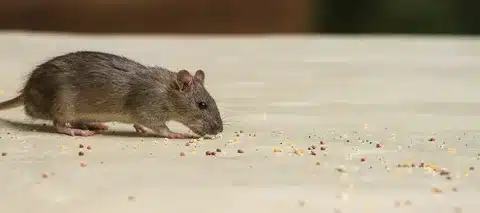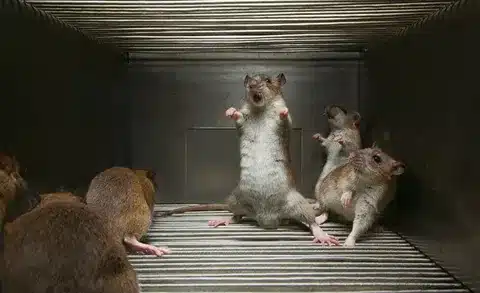Introduction
The behavior of rats in relation to daylight is a topic of interest and concern for many. In this discussion, we will explore whether rats come out during the day, the reasons behind their daytime activity, and the implications this behavior has in both natural and urban settings. Understanding when and why rats are active during the day is essential for pest control, public health, and coexistence with these rodents in various environments.
The behavior of rats in relation to daylight is a subject that piques curiosity and concerns many individuals. In this discussion, we will delve into the question of whether rats come out during the day. This behavior can seem unusual, as rats are generally considered nocturnal creatures, primarily active during the night. However, there are instances when rats may be observed during daylight hours, prompting questions about their adaptability and the factors that influence this behavior.
Understanding when and why rats are active during the day is essential for various reasons, including pest control, public health considerations, and coexistence with these rodents in diverse environments. It is also important to explore the implications of rats being active during the day and how this behavior may vary between natural and urban settings. By gaining insights into the patterns of rat behavior in relation to daylight, we can better address the challenges and concerns associated with these rodents.

Is it normal to see a rat during the day?
Rats will only come out when they feel that it is truly safe, which is why you rarely see them during the day. Thus, seeing one or more rats during the day is often a likely sign of an infestation in your home or commercial property.
Daytime Rat Sightings: Normal or Cause for Concern: The sight of a rat during daylight hours can raise questions about whether it’s a normal occurrence or a cause for concern. Let’s delve into this topic and understand the factors that influence daytime rat sightings.
Nocturnal by Nature: Rats are primarily nocturnal animals, meaning they are naturally more active during the night. Their evolutionary adaptations, such as enhanced night vision, suggest that daytime sightings are not their typical behavior.
Unusual Circumstances: While daytime rat sightings are not unheard of, they are often prompted by unusual circumstances. Factors like food scarcity, competition for resources, or disturbances in their environment can motivate rats to be active during the day.
Urban Adaptability: In urban environments where artificial lighting and human activity disrupt natural behavior patterns, rats may become more adaptable and venture out during daylight. They may perceive it as a safer time to search for food.
Pest Control Considerations: Daytime rat sightings can be a cause for concern, as they may indicate an infestation. Addressing such issues with pest control measures and maintaining cleanliness is crucial to prevent further rat activity.
What time of day are rats most active?
Rats and mice are nocturnal with most activity taking place between approximately one half hour after sunset to about one half hour before sunrise. Garbage is an excellent food source for rodents.
Timing Rat Activity: When Are Rats Most Active: Understanding the timing of rat activity is essential for pest control and public health efforts. Here, we explore the patterns of rat behavior and when they are most active during the day.
Nocturnal Creatures: Rats are primarily nocturnal animals, meaning they are most active during the night. This behavior is an adaptation to reduce their exposure to predators and potential threats.
Early Evening Activity: Rats typically become active shortly after sunset, although the exact timing may vary based on location and season. During the early evening, they start searching for food, water, and shelter.
Peak Activity Hours: The peak of rat activity occurs during the late evening and early morning hours, typically between dusk and dawn. During this time, rats are actively foraging for food, establishing nests, and engaging in social interactions with other rats.
Daylight Rest: Rats tend to rest and stay relatively inactive during daylight hours, often retreating to their nests. This behavior helps them conserve energy and avoid detection by potential predators.
Where do rats hide during the day?
Inside, rats can be found hiding out in holes, cracks, and crevices; climbing up through drains in bathrooms and kitchens; behind cabinets; behind and under appliances; in air ducts and ventilation systems; in piles of clutter; in storage containers; in hollow walls; and in crawl spaces, attics, garages, and basements.
Rat Hideouts: Where Rats Conceal Themselves During the Day: Rats are elusive creatures that prefer to stay hidden during daylight hours to avoid predators and disturbances. Here, we explore where rats commonly hide during the day and the reasons behind their choice of hiding spots.
Nests and Burrows: Rats often retreat to their nests or burrows during the day. These nests are typically located in hidden, secluded areas like wall voids, attics, basements, and crawl spaces. They provide shelter and security for rats and their young.
Dark, Undisturbed Spaces: Rats seek out dark and quiet locations during the day. Inside walls, behind appliances, or in cluttered storage areas are ideal hiding spots where they are less likely to encounter humans or potential threats.
Outdoor Hideouts:
In outdoor environments, rats may hide in vegetation, woodpiles, garbage piles, or underground burrows. These areas provide cover and protection from daylight and predators.
High Places: Roof rats, a common rat species, are known for their climbing abilities. They may hide in elevated locations like trees or roofs during the day, making them less visible.
Adaptation to Urban Settings: Rats in urban areas adapt to their surroundings. They may hide in abandoned buildings, sewers, or even inside vehicles to escape daylight exposure.
Are rats scared of humans?
Rats are afraid of human activity, mostly because humans are so much larger than they are. Rats also fear predators such as hawks, eagles, and other birds of prey. Other animals that rats are afraid of include your cat as well as rat terriers and other dogs that hunt rodents. Rats fear becoming a meal for a snake.
Rats and Human Interaction: Understanding Their Behavior: Rats are often associated with fear and unease among humans, but the nature of their response to human presence is more complex than it may seem. Let’s explore whether rats are truly scared of humans and the factors influencing their behavior.
Rats’ Cautious Nature: Rats are naturally cautious animals. Their survival instincts drive them to avoid potential threats, including humans. In unfamiliar environments, they may be especially wary.
Habituation: Over time, rats in urban areas may become somewhat accustomed to human presence. They may become bolder and less easily startled, particularly in settings where they frequently encounter people.
Nocturnal Behavior: Rats are primarily nocturnal, meaning they are most active at night. This behavior reduces their direct interactions with humans, as most people are awake during the day.
Food-Related Behavior: Rats are opportunistic feeders. In areas where they associate humans with a readily available food source, they may be less fearful and more likely to forage in proximity to people.
Fear in Unusual Situations: In situations where rats feel cornered or threatened, they may exhibit defensive behavior, which can include biting. However, their typical response to human presence is avoidance.
Is seeing a rat lucky?
You might be prosperous soon. Rats may have a bad reputation but not everyone sees them as vermin. In Chinese culture, the Rat represents wisdom, wealth and prosperity.
The Notion of Rat Sightings and Luck: A Cultural Perspective: The idea of seeing a rat as a sign of luck or misfortune is steeped in cultural beliefs and superstitions. Let’s explore this concept and the different interpretations associated with rat sightings.
Cultural Variations: The perception of rats varies widely among different cultures. In some cultures, rats are considered symbols of good fortune, wealth, or fertility, while in others, they are associated with disease, filth, and bad luck.
Positive Symbolism: In some cultures, particularly in parts of Asia, rats are viewed as a symbol of prosperity and resourcefulness. Their adaptability and ability to thrive even in challenging environments contribute to this positive perception.
Negative Symbolism: In many Western cultures, rats have long been associated with disease and unsanitary conditions, leading to a negative connotation. Seeing a rat in such contexts may evoke feelings of disgust and unease.
Personal Beliefs: Individual beliefs also play a role in interpreting rat sightings as lucky or unlucky. Some people may have personal superstitions or cultural backgrounds that influence how they perceive these encounters.
Will rats go away on their own?
Poor housekeeping can easily result in a rat infestation. Use brush strips where there is a gap under a door. Failing to report a rat infestation is not wise – they do not disappear of their own accord.
Rat Infestations: Will They Disappear Naturally: The presence of rats in and around homes or businesses can be a cause for concern, prompting questions about whether these rodents will go away on their own. Let’s explore the factors influencing rat infestations and the likelihood of them disappearing without intervention.
Reproduction and Population Growth: Rats are prolific breeders, with the ability to produce multiple litters of offspring each year. A small rat problem can quickly escalate into a larger infestation if left unaddressed.
Food and Shelter Sources: Rats are drawn to environments that provide them with food, water, and shelter. If these resources are readily available, rats are unlikely to leave voluntarily.
Adaptability: Rats are highly adaptable creatures that can adjust to changing conditions. If they perceive an environment as suitable and relatively safe, they may remain in the area.
Disease Concerns: The presence of rats can pose health risks due to the potential transmission of diseases. Therefore, waiting for rats to leave on their own is not advisable, as it can lead to prolonged exposure to these risks.
Will rats move on if there is no food?
It takes four or five days for a rat to die of starvation, but if they can’t find any food at all, they will usually move on to a new spot before they die. The more active they are, the faster they will dehydrate and deplete their energy reserves, so the less food available, the less active they will be.
Rat Behavior and Food Availability: Will Rats Leave Without Food: The relationship between rats and food availability is a crucial factor in understanding rat behavior and infestations. Here, we explore whether rats will relocate if there is no food source, and the considerations involved.
Adaptability to Food Scarcity: Rats are opportunistic feeders with a keen sense of smell, allowing them to locate even small food sources. While they prefer areas with consistent access to food, rats can adapt to periods of food scarcity by foraging more extensively or exploring new areas.
Persistence in Search: Rats are persistent in their search for sustenance. Even if a specific food source is depleted, they may continue to search the vicinity for alternative options or expand their territory.
Nesting and Shelter: Rats prioritize shelter and safety, especially when they establish nests and breeding grounds. They may remain in an area with available shelter, even if food becomes less abundant.
Preventive Measures: Waiting for rats to leave due to a lack of food is not an effective pest control strategy. To address rat infestations, it’s essential to implement proactive measures, including sealing entry points, maintaining cleanliness, and using traps or professional pest control services.
What do rats hate most?
You can repel rats from your home and garden with scents they dislike, such as clover, garlic, onion, hot peppers containing capsaicin, house ammonia, used coffee grounds, peppermint, eucalyptus, predator (cat) scent, white vinegar, and citronella oil.
Rat Aversions: Understanding What Rats Dislike: Rats have certain aversions or dislikes that can be leveraged for pest control purposes. Here, we explore some of the things that rats commonly dislike and may deter them from certain areas.
Strong Odors: Rats have a sensitive sense of smell, and they are typically averse to strong, pungent odors. Substances like peppermint oil, ammonia, or garlic can be used to create a scent barrier that rats find unpleasant.
Ultrasonic Devices: Ultrasonic devices emit high-frequency sounds that are inaudible to humans but can disturb rats. While their effectiveness can vary, some people use these devices as a deterrent.
Predators: Rats are naturally wary of predators. The presence of animals like cats or dogs can deter rats from an area, as they perceive it as a potential threat.
Cleanliness: Rats are more likely to infest areas with poor sanitation and abundant food sources. Maintaining cleanliness and proper food storage can make an area less attractive to them.
Physical Barriers: Rats are skilled climbers, but smooth, vertical surfaces can hinder their movement. Metal flashing or wire mesh can be used to block access to vulnerable entry points.

Conclusion
The behavior of rats coming out during the day, despite their nocturnal tendencies, is not uncommon and can be influenced by various factors. While rats are primarily considered nocturnal creatures, they may be active during daylight hours due to factors such as food scarcity, competition for resources, and the disturbances of urban environments.
Understanding the circumstances under which rats may be active during the day is essential for effective pest control, public health efforts, and coexistence in various settings. It highlights the adaptability of rats and the need for proactive measures to manage and prevent rat infestations.
The challenges posed by daytime rat activity include concerns about disease transmission, the need for immediate pest management measures, and the importance of urban planning and sanitation practices. Preventive measures, such as sealing entry points, maintaining cleanliness, securing food sources, and implementing effective pest control methods, remain crucial in minimizing human-rat interactions and associated health hazards.





No Comments